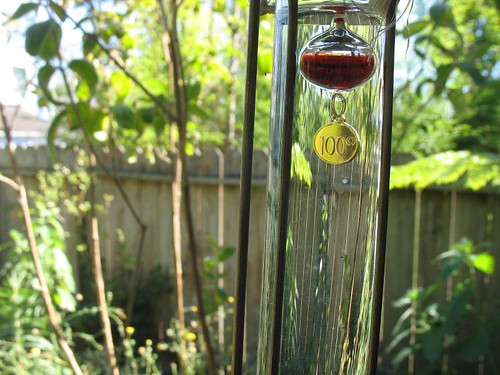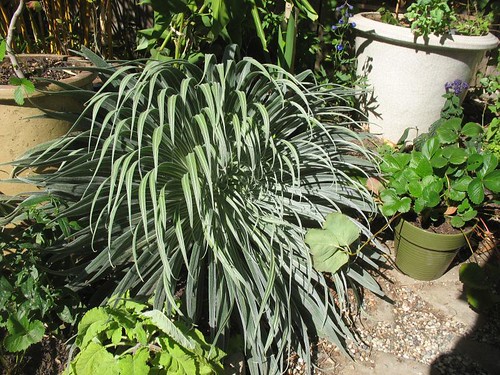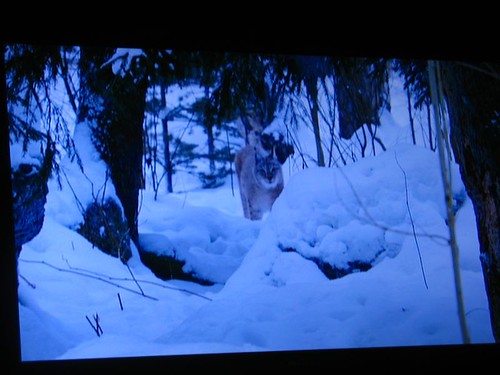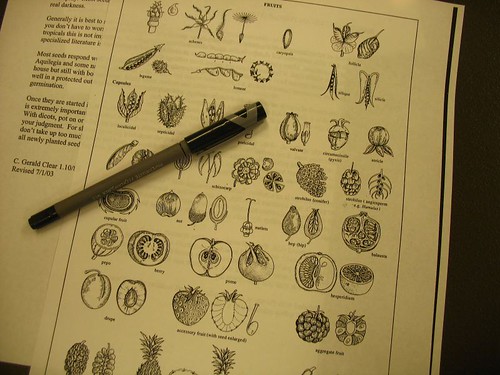This is Part 1 of 2. I'll add Part 2 tonight or tomorrow.
I attended this month's meeting of the
California Horticultural Society last night to hear nurseryman
Nevin Smith talk about gardening with California native plants.
Mr. Smith grew up in Sonoma County, California, working at his father's nursery. He earned a graduate degree in political science at Johns Hopkins University thinking he wouldn't enter the nursery trade, however that turned out not to be the case. He later started his own company named Wintergreen which he sold to the wholesale operation
Suncrest and he's worked there ever since.
Suncrest is a key wholesale provider of retail nursery plants to all of California, well regarded for offerring quality material suitable for mediterranean climate gardens. Probably half the 1-gallon cans I've taken home from my local retail nursery had Suncrest labels, and I know the San Francisco Botanical Garden augments its plant sale inventory with an annual trip to Suncrest. I know because I had the good fortune of tagging along on last year's shopping spree. I was physically exhausted after visiting Suncrest's enormous, sprawling facility.
By now, even beginning native gardeners have ready access to a familiar palette of garden-friendly choices: ceanothus, manzanitas, salvias, currants, redbud, mimulus, lupine, buckwheat, erigeron,
et cetera. All these plants are discussed at length in several recent
books. However this talk emphasized species not commonly found in gardens many of which Mr. Smith is still working on developing for the market. After a brief introduction, he launched into a discussion of native trees, shrubs, vines, and perennials.
On the subject of trees, Mr. Smith seemed desolate. He said, by and large, people are not planting trees or even large shrubs in their gardens anymore. The emphasis now is on perennials and flowers. I cannot imagine enjoying a garden without some large plants for very long. Especially in a tiny garden like mine, it's absolutely necessary to have some vertical interest. To that end, in my garden, I picked the first tree Mr. Smith discussed, our native buckeye
Aesculus californica (well, he went through a list in alphabetical order!). He described an especially shrubby selection of buckeye he made from Goat Mountain where the trees averaged only 6-10 feet in height. I'm planning to keep mine somewhere around 12 feet.
A. californica is apparently quite amenable to that.
People are very reluctant to plant this tree now because it hosts
Phytophthora ramorum, the fungus associated with Sudden Oak Death. Well, there aren't any oaks anywhere near my house. Also, I'm tired of this Sudden Oak Death hysteria. I've lately heard some authorities say Sudden Oak Death has not exactly lived up to its billing. California oaks are still in trouble, yes, but other problems may be more urgent than Phytophtora. And many of the exotics are susceptible to Phytophthohra too. So it goes.
He suggested several other species that straddle the tree/shrub size regime.
Cupressus macnabiana is a garden-worthy cypress with excellent fragrance, but noone plants cypress anymore, and the only native cypress people are interested in having is the famous Monterey cypress (that's
Cupressus macrocarpa--the first picture in
this post), which is ill-suited to most garden environments. I can't say I blame people for not being enthusiastic about cypress in the garden, or wanting to have the most inappropriate cypress of all. Although, we did have a sample of this
C. macnabiana for sale at the Botanical Garden recently and it smelled wonderful and I was sorely tempted. Someone bought it before I could tho'.
Other native shrubby trees he mentioned include
Betula occidentalis,
Fraxinus dipetala, and
Cercis occidentalis. I guess I didn't realize
Fraxinus dipetala (Flowering Ash) remained relatively small for its whole life. Maybe one day I'll get tired of having a summer-dormant buckeye in the garden and get Flowering Ash instead. He discussed a
Cercis collected on the eastern slope of the Sierra Nevada that turns scarlet in the fall, instead of the usual yellow--even when its grown at the coast, where fall color is generally not impressive. (Sidenote: my ecology teacher recently mentioned
Cercis flowers are edible and taste good! I had no idea. Now I have a reason to live through winter.)
Also mentioned in the talk: Arbutus menziesii (challenging in any garden), Populus tremuloides (excellent selections currently in development), Quercus garryana var. breweri (very variable, can be anywhere between prostrate mat to tree-form)
Moving on to shrubs, he discussed the difficulty of bringing several plants into commercial production.
Arctostaphylos nevadensis (collected at Black Butte) might one day be an alternative to
A. uva-ursi, but current selections are hard to maintain.
Artemisia tridentata v. vaseyana is a more compact and manageable wormwood than the widely available
A. californica, and it deserves more exposure.
Very drought tolerant
Cercocarpus betuloides is a plant
"we will have to see more of" in ornamental landscapes of the future due to anticipated water shortages in California. I'm on board with that. See it in the second, third and fourth pictures,
here.
Chamaebatiaria millefolium is native east of the Sierra all the way to Colorado. Its toughness and incense-like fragrance recommends it for gardens west of the Sierra as well. Apparently it's much used around Denver.
Chrysothamnus nauseosus is a much overlooked desert plant much loved by butterflies. The best toyons (
Heteromeles arbutifolia) come from Lake Berryessa. He sees toyons used a lot in commercial landscapes, but not enough in the garden. He said his popular
Malacothamnus fasciculatus 'Casitas' came from an illegal collection (cuttings) made "a long time ago".
Other shrubs discussed:
Ceanothus oliganthus var. sorediatus,
Eriogonum parvifolium , Eriogonum umbellatum var covillei,
Holodiscus microphyllus,
Lupinus albifrons,
Philadelphus lewisii 'Covelo'.
He says many common garden Ceanothus have
C. oliganthus in their lineage.
Eriogonum parvifolium is available in many native plant nurseries. He described it as a tidy mound, but mine ranged and trailed. Seeds are available from Theodore Payne in my links. My notes don't describe why he thought that species of Holodiscus merited special attention over the common
Holodiscus discolor, and the specimen in the slide he showed didn't look very good either, so I have no comment.
Lupinus albifrons is the Silver Bush Lupine I've mentioned before (so has Amy Stewart). Flowers and fragrance can vary dramatically from specimen to specimen. Mine smells like grape soda and I couldn't be happier.
In Part 2: Vines, perennials, and sub-shrubs. And I'll talk about how I absolutely loved the Cal Hort meeting itself.









































